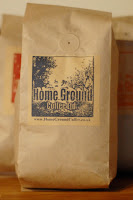Curry Week 13th October-19th October
Ready for the start of Curry Week (13th October- 19th
October) Donald Russell have written this fabulous article for me to share with
you. If you don’t fancy making your own curry this week they deliver mouth-watering
currys to your door! Enjoy & I might have to have a go making the Lamb
Rogan Josh this week.
5 Curries That
Britain Loves
It might
surprise you to know that the first curry house in Britain actually opened its
doors in 1809. The British have had a longer love affair with spices than we’d
think! In the 1940s, curry houses started popping up and staying open late to
catch the post-pub trade, starting our habit of having late night curries.
However, it wasn’t until the 1970s, with the influx of Bangladeshis to the UK,
that curry became truly embedded in our culture and adopted as a national dish.
As part of National Curry Week, we’ll look at five of the best-loved curries
below, their history and which cuts of meat go best with each one.
1. Chicken Korma for those who can’t
handle the heat
A Chicken Korma is the go-to
dish for those of us who can’t handle the heat. It’s usually a mild, sweet and
creamy sauce, flavoured with cashews, almonds, coconut and spices like
cardamom. As with most curries we enjoy in Britain, the link to their origins
is tenuous as recipes have been adapted to suit our palate, but its roots are
in the North of India. In the South, a Korma tends to feature a tomato-based
gravy and is typically quite hot.
The Korma originated from the
Islamic Courts of the Moghuls between the 10th and 16th
Century across India, Pakistan and Bangladesh. It was used as a banquet dish
and a way to show off with expensive ingredients like nutmeg, rose water,
saffron and dried fruits, rather than being an everyday dish.
The definition of a Korma is
a dish where meat or vegetables are braised in water or stock, with yoghurt or
cream added later. Chicken or mutton are the most popular meat accompaniments
to this rich and tasty sauce. We think chicken thighs, with their depth of
flavour compared to chicken breasts, are the perfect choice. This darker meat
is flavoursome without overwhelming the delicate balance of flavours in a
Korma.
2. Chicken Tikka Masala was invented in
Glasgow?
Chicken Tikka Masala is a
rich, spicy dish. The origins are unknown, but there is a story, which claims
it was invented in a Glasgow curry house. A patron is said to have sent back
his Chicken Tikka claiming it needed a sauce. The chef supposedly improvised
using a can of tomato soup, yoghurt and spices! Others claim it originated in
Uttar Pradesh or the Punjab. Either way, it’s one of the most popular British
dishes. As with the Chicken Korma, chicken thighs are the way to go with this
curry.
3. Beef Madras from the heat of Southern
India
The Madras is a deeply flavoursome
curry from the South of India, named after a city called Madras, now called
Chennai. However, it has very much been adapted for a British palate! Its roots
are in Hindu culture, so would have typically been vegetarian, but for those
who prefer a meatier curry, shin of beef works perfectly.
The shin of beef
has depth of flavour, adding to the richness of the madras sauce without its
flavour getting lost. It’s perfect for curries and casseroles as it becomes
melt in the mouth with slow cooking. The connective tissue it contains adds
flavour and thickness to sauces.
A Madras is usually a vibrant,
red colour from the use of paprika and chillies. The South of India is hot
enough for chillies to grow well and so many dishes from the South are much
hotter! A raita is a great accompaniment to this dish to help cool you down.
4. Lamb Rogan Josh brings you the aroma
of Kashmir
Rogan Josh is a mild to
medium curry that originates from Persia and is a typically Kashmiri dish. Its
name means ‘cooked in oil on a high heat’. Rogan Josh works best with lamb, neck
fillets although traditionally, goat would have been used due to its wider
availability. Lamb is usually braised and the sauce is based on onions, ginger,
garlic, yoghurt and aromatic spices. A rich, red colour to the sauce is typical
for this curry.
5. Lamb Jalfrezi will get you hot under
the collar
A Jalfrezi tends to be a much
hotter dish than the others listed above. It uses green chillies and consists
of marinated meat fried in oil and spices. The resulting sauce is thick and
dry. It dates from the time of the Mughals and gets its name from the Bengali
word ‘jhal’, which means hot. This curry is increasingly popular in Britain as
we have become accustomed to hotter food with influences from Mexico, Malaysia
and parts of Asia. A Jalfrezi works equally well with lamb or chicken!
If you’re going to test out
some of the curries above, remember that the way you treat the meat you use is
key to creating a really rich sauce. Marinating overnight is ideal. When you
braise the meat for the dish, be sure to sear it all over, on a high heat with
some oil beforehand to seal in as much of the flavour as possible. Trying it
yourself is the perfect way to enjoy National Curry Week!




Comments
Post a Comment